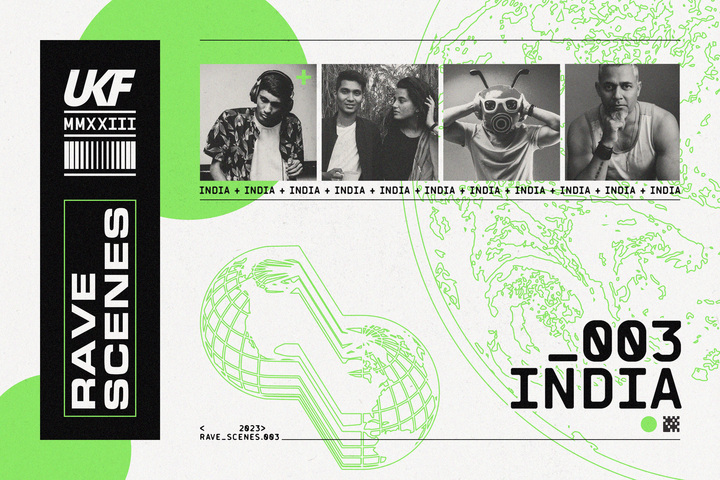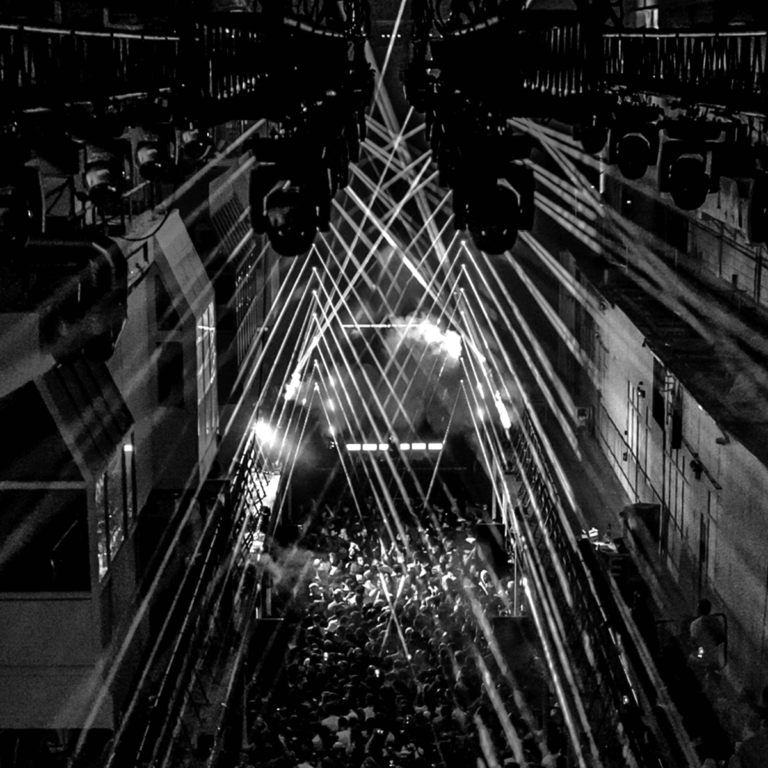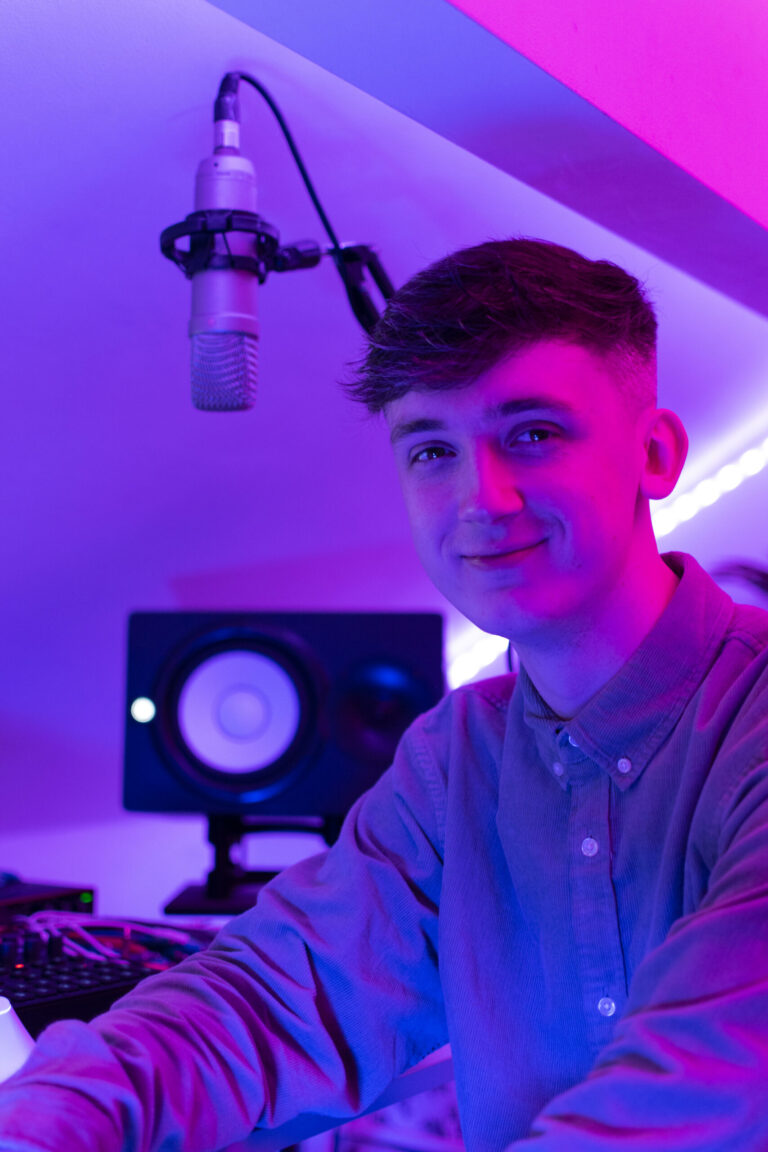Would you believe me if I told you that jungle was first made in India as early as 1996? Or the fact that jungle and drum & bass parties were taking place in the country right when the genre had just moved a step further from its prototype stage? Drum & bass and the Indian subcontinent have shared a complex relationship. Despite hitting its shores over two decades ago, it has remained elusive for most of the country’s underground.
The first ripples of the genre began when celebrated producer and composer Talvin Singh released the seminal compilation ‘Anokha: Soundz Of The Asian Underground’ in 1997. Featuring monumental names like A.R Rahman, State of Bengal, Osmani Soundz, and Talvin Singh himself, the compilation served to be a gateway into jungle and drum & bass for many of us in the Indian subcontinent and paved the way for the Asian Underground movement.
Asian Underground is a form of sound and a community that started finding its roots in the British Asian and South Asian Canadian communities in the late 80s. Blurring influences from drum & bass, jungle, breaks, breakbeat, and UKG with traditional South Asian elements, Asian Underground started gaining pace in the UK before eventually making its way to South Asia in the late 90s.
The ‘Anokha: Soundz Of The Asian Underground’ was pivotal in inspiring many up-and-coming regional producers to get into the studio and make music like their heroes. It’s hard to put a firm finger on one particular city and credit it for pioneering the scene because, no matter the capacity, something was bubbling up in nearly every major Indian city, especially Mumbai and Bangalore.
Vachan Chinnappa, who has been championing the genre in India for over two decades, first encountered jungle as early as 1992 in Mysore (a city in Southern India). The historical importance of Mysore meant it would attract tourists from across the world, and the club Vachan played at was in the center of it. ” During one of my club nights, someone handed me a cassette with some jungle in it. I heard it, and it opened up a completely different world for me. The snappy nature of the music, the energy, and the pace were distinct from anything I had heard before.”
Vachan continued his explorations and moved to Bangalore in the late-90s, just when the city was on course to becoming the IT hub of India. A young and receptive crowd in Bangalore helped Vachan’s efforts as he hosted club nights on Mondays, attracting over 500 people every time.
“My job was to educate the crowd and not play them stuff they wanted to hear. I would dig deep into Liquid DnB records and play them out to a crowd that had never experienced anything like it.”
The scene slowly picked up in Bangalore, but Mumbai and Goa weren’t too far behind. The first Drum & Bass party in Mumbai was hosted in 1999 by Bhavishyavani Future Soundz, the most influential pioneers of the city’s underground culture. While Goa, Ever since the 70s, has been pushing mind-bending psytrance music, its contributions to DnB are equally significant. Crews and festivals like Bass Spell and Sunsplash Goa continue to host DnB parties with the state’s stunning coastal settings.
A watershed moment for the genre in India came when Talvin Singh and Nitin Sawhney – two pillars of the Asian Underground and Indian electronic music released their groundbreaking albums, ‘OK’ and ‘Beyond Skin’ in 98 and 99. Tracks like ‘Butterfly,’ ‘Serpents,’ and ‘Nadia’ changed the way we perceived electronic music.
These albums inspired an entire generation of producers and DJs in India, with the most meaningful outcome of this era being the birth of Midival Punditz in 2002. Two folks from Delhi, Gaurav Raina, and Tapan Raj, burst onto the scene and captivated the country like no one ever had. Their style of blending Indian folk elements with Drum & Bass and Electronica touched millions of hearts when the same set of listeners would previously turn their back on the music for being too complex.
With a career spanning over two decades, Midival Punditz have released five genre-bending albums in addition to their work in Bollywood for the movie Karthik Calling Karthik’. As well as consistently releasing music, Midival Punditz have also been an active part of the Indian club circuit, dishing out drum & bass at venues up and down the lengths of the nation. If you want to explore bass music from an Indian standpoint, take a day out and explore Midival Punditz’s catalogue. Intergalactic travel guaranteed.
Another leading act from the golden era of the Asian Underground is Bandish Projekt. Previously a trio, and now led by Mayur Narvekar, Bandish Projekt has hit the scales with drum & bass, which is yet to be accomplished in India. While Bandish Projekt focuses on the folk side of things, Mosillator is Mayur’s drum & bass alias, which he has been supporting for over a decade,
Mosillator is an act that has had a defining say in the genre’s progress here, and his introduction to d&b is an exciting story.
“I was effectively introduced to dance music as Drum & Bass, and since then, for me, it was d&b or nothing. The Bhavishyavani Future Soundz crew would give me tapes to listen to, and my classical Indian music background, which is percussion-heavy like Drum & Bass is, almost helped me fall in love with it instantly.
When I started throwing parties in Ahmedabad, a city in the dry state of Gujarat in India where selling alcohol is illegal, we defeated the notion that you need to be intoxicated to enjoy music. In fact, it helped people connect with drum & bass all the more.
We would listen to d&b while eating Pav Bhaji (a popular Indian street snack). Whenever I would get someone else to play alongside me, they would know they couldn’t mess about because every individual in the room knew what they were listening to.”
The internet helped the scene’s cause in the UK, and it also helped ours. Accessing music which was previously a massive problem for us since no record shops were selling drum & bass here, but the internet happened and helped us dig into music like we never had until then. As soon as India managed to overcome the obstacle of accessibility, we witnessed an explosion of fresh drum & bass music, parties across the country, and a community continually looking out for like-minded people.
“Whenever we would get a chance, we would play Drum & Bass,” says Mayur as he reminisces the days when d&b parties in Mumbai were starting to become a regular occurrence and music was at the forefront of the proceedings. “For many years, I attended parties where Mukul Deora, aka Bhaisaab from the Bhavishyavani crew, would play, but I had no clue what he looked like. That’s how underground people wanted to be back then to ensure that music takes the foreground, not the face.”
From the 90s to the mid-2000s, Mumbai was steadily becoming the hotbed for experiencing forward-thinking arts and culture in the country; and leading the charge for the movement was Zenzi Mills in Bandra, along with its outpost being thirty minutes away from the main venue in Lower Parel alongside Blue Frog.
Zenzi Mills and Blue Frog were the hubs for the city’s music and arts scene. Be it Rock, House, or Techno, every style of music was supported by Zenzi Mills, and it wasn’t long until drum & bass found its way into Zenzi Folklore. Acts like Raffael Kabbly, Kris Correya, and Sohail Arora led Bay Beat Collective, The Mental Martians, BassFoundation, Tarqeeb, DJ Uri, and Vachan Chinnappa found themselves playing drum & bass music regularly.
The rapid rise of d&b’s popularity led to it reaching cities like Jaipur in northwestern India, where we saw the Asian Underground supergroup Nasha Experience hosting parties in 17th-century Indian castles.
While the scene spread its wings across the country, one man was biding his time until giving the country its finest time as a drum & bass community for years to come. Part of the Bay Beat Collective trio, Sohail Arora had already played an integral role in laying the infrastructure for the genre to flourish in the coming years. But the inception of ‘Krunk’ in 2009 changed the landscape of the Indian bass music culture altogether.
“I started a residency with the Bay Beat Collective at Zenzi Mills, where we got a Monday night to dish out Drum & Bass. It eventually went from a tiny bunch to a 300 to 350 strong community who wanted to listen to drum & bass regularly. I worked with Blue Frog for a few years, where we hosted Pendulum.”
Bringing one of the finest drum & bass acts to Mumbai was monumental in its own right, but Sohail didn’t stop there. Inspired by how the scene came together across the country, Sohail kickstarted his ‘Krunk’ journey – an initiative assembled to push bass music in the country.
“Along with Krunk, we also started ‘Bass Camp Festival,’ in 2010, which was launched to give the drum & bass culture an impetus in the country. ‘Bass Camp’ isn’t a full-blown festival but primarily a multi-city party where we would host a blend of international and local drum & bass acts.”
Bass Camp Festival’s debut edition saw Commercial Suicide boss Klute making his first trip to India. In the same year, Krunk also brought titans like LTJ Bukem and DJ Marky for a series of shows which led to Sohail pioneering a shift in the club culture, which was heavily dominated by house, techno, and bollywood.
What followed was what many regard as the golden era for drum & bass in India, and Sohail Arora, with his Krunk and Bass Camp initiative, was at the forefront of it. Since the first edition, Sohail has hosted the likes of London Elektricity, dBridge, Calyx & Teebee, Ant TC1, Alix Perez, Squarepusher, Dub Phizix, Chimpo, and Ivy Lab, to name a few.
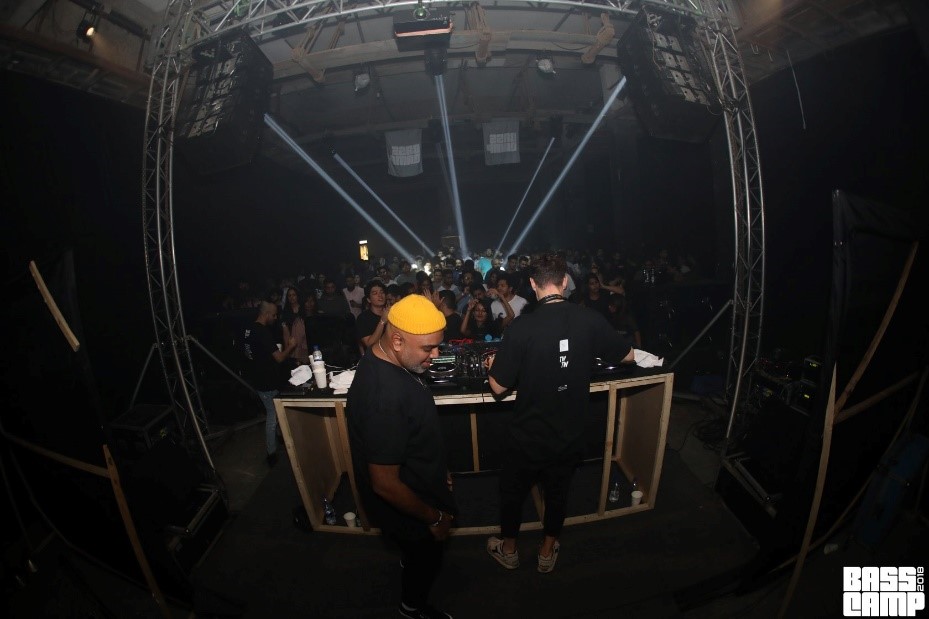
Image Credits: Bass Camp Festival
The echoes of the genre’s rise were felt-nationwide and it led to major festivals like Sunburn and Vh1 Supersonic hosting full-throttle stages for bass music, with a vast majority of the slots taken up by drum & bass acts. Supersonic, in particular, defined the genre’s stature during the early 2010s era. Name the artist, and the next thing you would know is that they’re on the Supersonic line-up. Gold old days!
The next major breakthrough for drum & bass in India was when two friends from Bangalore formed ‘Drum & Bass India’. Founded in 2013, ‘DnB India’ has represented the genre in its purest, like the way you would experience it in London or Bristol.
Debjyoti Das and Ritu Arya started their enterprise with parties in a small setting with a bunch of heads who would show up to listen to the music they loved. That bunch has now transformed into a thriving scene in the city, and ‘DnB India’ now leads the charge for drum & bass in India, packing clubs to their absolute limit.
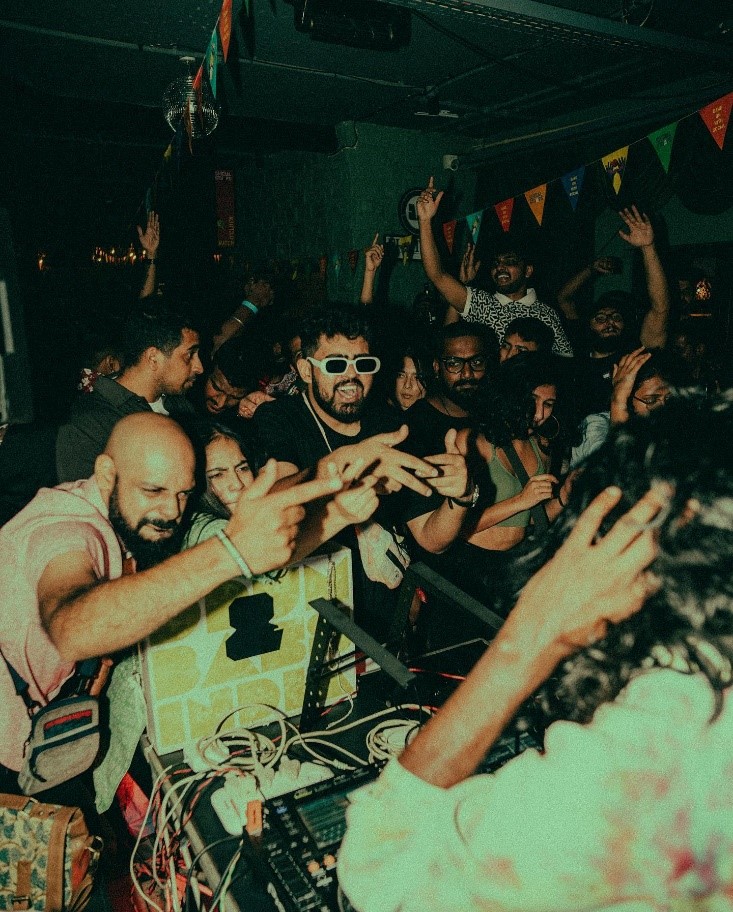
Image Credits: Drum & Bass India
My chat with Debjyoti and Ritu focused more on the hurdles they had to cross to make the community what it is today. “I was a House DJ at a club in Bangalore where I would play for five hours on the bounce. Once, I tried sneaking in a drum & bass tune, and, to my surprise, it worked. Since then, I House took a back seat for d&b, but the countereffect of it was that I stopped getting gigs where I could play it.”
“For over three years, I kept chasing clubs and promoters until growing sick of checking my email every day, hoping for a response.” Ritu, being a drum & bass head herself, was approached by Deb with the idea of starting a community. “One day, Deb came up to me, all fed up with how frustrating it was to push the scene here, and he pitched this idea of starting something of our own for us to grow as a scene and him as an artist; there was no way I was going to hesitate,” said Ritu
Deb and Ritu also addressed the stigma drum & bass has with clubgoers in India. Ritu says, “When people listen to Drum & Bass here, they don’t return home thinking they heard something new today. In fact, the immediate reaction is that they heard music they didn’t like, which kills their appetite for exploration at the first step.
Deb echoed Ritu’s thoughts “The problem with drum & bass here is that people think it’s aggressive. Yes, there is a side to it that is pulsating and aggressive, but there are other forms of the genre that are tailor-made for couch listening. So, like Ritu said, eagerness to explore is killed the first obstacle alone.
Dishing out drum & bass up and down the land, Deb is the country’s best d&b DJ. However, Deb stressed the importance of the people understanding the music he is playing it to which has helped him get better at his craft. “When I started playing in Bangalore, if 100 people were dancing in front of me, 10 would know the tune I was playing, and another 10 would know the genre. Now when we host gigs, there are 40 who know the song, and another 40 know the genre. Their reaction inspires me to pull out dancefloor weapons and experiment more.”
An essential contributor to India’s golden era of drum & bass was the sheer number of producers making the genre. Every major city had its share of great producers who were making music while helping other producers hone their craft as well.
“I was introduced to Drum & Bass in seventh grade, so my experimentation began earlier than my own expectations,” said Piyush Bhatnagar, aka Sound Avtar. Championing d&b since 2008, Piyush has been an integral part of the country’s drum & bass culture. First, through his Mental Martians crew, then going solo, Sound Avtar has pushed d&b in the city he comes from and every corner of India he has played in.
“Despite knowing the obstacles that come with making drum & bass in the country, I couldn’t think of any other style or genre that moved like d&b did, and I was never going to look back.” With his flamboyant style of production and DJing, Piyush has been the biggest purveyor of skull-rattling d&b music in India.
Having been a part of the scene for over a decade, Piyush has seen everything there had to be witnessed with d&b here, and he spoke about issues that were holding the genre’s ability to rise over here. “Yes, festivals were bringing in the most prominent names, but if you look at the setup, drum & bass stages would always be in one corner of their setting. Which, in my opinion, hindered our ability as a scene and as a community to be recognised by others.”
Another important name in the country’s drum & bass culture is Aditya Ashok, aka Ox7gen. Aditya’s minimalistic and watertight productions have taken his music to labels like RAM Records and Med School Music. Listen to his tunes, and you will notice the highlight being Ox7gen’s ability to play with groovy and melodic elements.
I asked the Mumbai-based producer about his penchant for playing with melodies came about and how was the time like for him when drum & bass was at its peak in the country. “When I started producing, I listened to a lot of liquid d&b and jump up. I would also follow BBC Radio 1 mixes to learn more about the sound, but then I was introduced to guys like Bop and Subwave. I fell in love with their melodic and minimalistic yet futuristic sound, which also translated into my style.
When speaking about what drum & bass was like for him at its peak in India, Aditya said, “The fact is that, for better or for worse, drum & bass, globally at scale, is an underground sound. The upside to it in India was that the community was super interesting, and you would meet many exciting people during a rave. Then the downside was that there were many nights when the floor was practically dry.
Until now, every producer, DJ, or promoter I chatted with was from India, but here is an interesting one. Daniel Patterson, widely known as Crash Comet, moved from the UK to India and became an important name in the fraternity. While moving from his home country to Bangalore, India, happened by chance; it didn’t stop Crash Comet from building a community that stands tall as the finest of the nation.
“When I first moved to Bangalore, I got in touch with someone to ask if I could play a few DnB gigs here. He said, don’t bother – because drum & bass is dead. I took that comment personally and took it as a challenge.”
From that moment on, it was all about growing the scene. It wasn’t just me; there are so many people I can name who were instrumental in making BLR DnB the community it is today. We started on a small scale with gigs that sometimes struggled to pull a footfall of twenty.
We knew there was potential in Bangalore like no other Indian city, and we continued hosting gigs regularly, and it inspired me to make music and reach out to labels as well.”
During his time in Bangalore, Crash Comet, with his soul-stirring brand of music, has landed releases on Liquicity and Differential Recordings, and he shared an emotional moment in the city when he won a remix competition for Danny Byrd hosted by Hospital Records. “I went to a club for a Drum & Bass party; people came to me and congratulated me for winning the competition. I couldn’t believe what was happening there, and that night gave impetus to my purpose of building something substantial.”
The scene is so exciting that a man Crash Comet met on a flight from the UK to Bangalore and made friends with ended up coming for his gig and completely got the vibe of the genre despite knowing little to nothing about it. “That’s the beauty of the city and d&b in a nutshell; everyone feels welcome, and they feel like they are a part of it instantly,” exclaimed Crash Comet.
At this point from 2010 to 2017, four major cities in the form of Bangalore, Mumbai, Pune, and Delhi, were pushing the scene to the best of their abilities. There were residences in every city and regular parties happening nearly every week of the month, which summed up how strong the scene was over in India.
However, techno, which was already on its way to dominating clubs and festivals in India, crushed everything in its path. The number of shows torpedoed, festival slots for drum & bass dried up, making way for techno, and new producers making their way into Indian electronic music saw the genre as the way forward. This was the story for over half a decade until the outset of the pandemic and hip-hop becoming the supreme sound of the country.
Dilip Jangid, who has been a part of Drum & Bass India’s earliest days, feels the crossover of genres is helping d&b’s cause of making its way back in. “After the pandemic, people are looking for experiences, which Drum & Bass can provide in abundance. That’s why you can see people from hip-hop, the biggest scene in India, turning to jungle and drum & bass when they want to listen to something fresh.”
COVID-19 led budding producers who were making hip-hop to explore jungle, and the most obvious transition of Jungle is Drum & Bass. Once things started returning to normalcy, so did shows across India, and from nothing, DnB found a new lease of life.
With four mind-numbing cuts that exhibit progressive low-end butchery with a tinge of oriental elements, UKato is the first Indian to release a full-blown EP on ProgRAM Records and a single on RAM Records.
“Even though I have been a part of the scene for very little time, I feel like drum & bass never really went away, in my opinion. It’s a community that is looking out for each other, for heads who they can connect with, come together and share their love for the music.”
UKato, who recently shared stages with IMANU, gave me a glimpse into how he throws drum & bass onto crowds he plays in front of. “I start with some UKG and techno, some dubstep here and there, and then jump straight into drum & bass. It has always worked and given crowds something to ponder when they go home.”
Complimenting UKato’s efforts is Smokey has been doing a phenomenal job of blending Bollywood classics with drum & bass and bringing the wider scene into it. It’s not just Bollywood edits though; Smokey can flip the game and take you on a journey with her deep and intricate productions. Smokey has never shied away from playing drum & bass to the biggest crowds and also places where she felt that she was entering uncharted territory, without worrying about the reaction.
This knack of hers has led to Smokey being the official mentee of RAM Records for EQ50’s mentorship. “This opportunity is by far the biggest of my life. After dedicating my life to this sound, I feel like my patience is paying off. The entire EQ50 crew is the most supportive set of people I have met until now and I can’t wait to witness what I feel will be the most exciting part of life as a Drum & Bass producer.”
It’s not just UKato and Smokey alone. Names like C4GE, Big Trouble, Watashi, Lacuna, Ankan have been belting incredible music while Karmasynk is waving the Indian flag high from the United States with releases on labels like C4C, Delta Recordings, and CODE Recordings. The DJing front is led strongly by Bavlow, Hunnit D, Hellkitty, Benkii, Rasa, and Wobblehead, among many others.
As a scene, India is surely turning a corner, and there is a strong feeling among everyone working in it that this resurgence isn’t just another purple patch. We all feel a unified sense of belonging towards drum & bass, and the signs of its progression are incredibly promising. PAV4N-led 4NC¥ and //DarkMode has been pivotal in releasing music from artists in India, dropping regular guest mixes while introducing top international names onto the label, thus making the music accessible for the ones seeking it.
“I will keep pushing the music I love for as long as I can, but I need support from others,” says Sohail while speaking about how we can take the community forward; and this time it feels like support is coming from all ends. Communities like Junket, DnB Draft, Screech Wubs, Backdoor Parade, and Neckwreck are actively pushing the sound to the best of their abilities.
“The problem is that there hasn’t been a consistent scene like techno or psytrance over here, but now since the genre has become more experimental than ever and turned into a 140 to 170 sound, people have been more receptive to newer styles, which I feel will be critical for the resurgence of dnb in India,” said Ox7gen when asked the same question about DnB’s revival in India.
Hellkitty and Hunnit D led Screech Wubs stressed the importance of continuing to build a strong community. ” we need to be consistent in hosting gigs, staying connected with the current community, working with programmers in venues to help elevate the experience, showcasing good talent from the country, and moreover “word of mouth”.
While the common denominator of my conversations centered around community building, they also stressed the need to put our culture in front of the world while pushing drum & bass. Were we putting our culture enough before? No. Are we doing it now? Absolutely yes, and we’re just getting started.
We’re a country of 1.4 billion people and if you attempt to dig deeper, you will find a rabbit hole of ultra-talented producers making supreme quality music. It’s not just India, by the way; the rise of Sri Lankan producer IYRE is a sign of what South Asia can produce as a region.
Soon you will hear stories from other countries in the region. But until then, here is a story about drum & bass in India – a story that had to be told.
